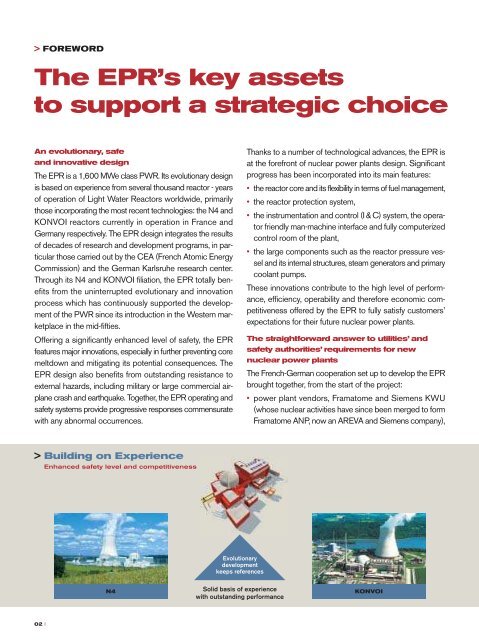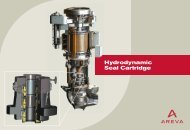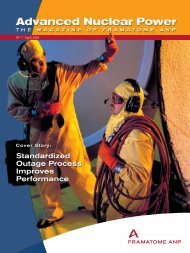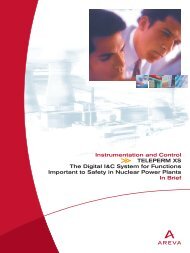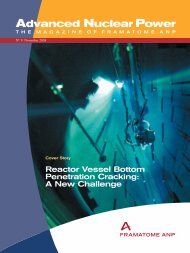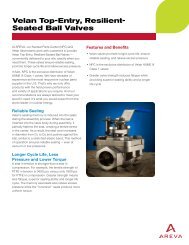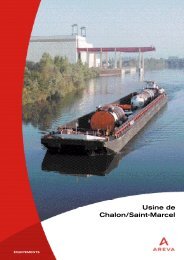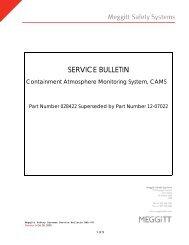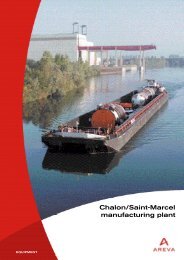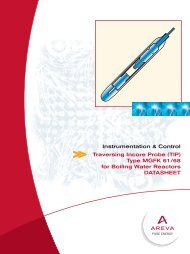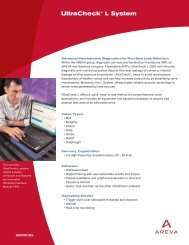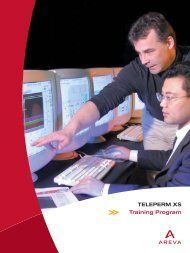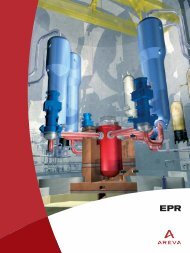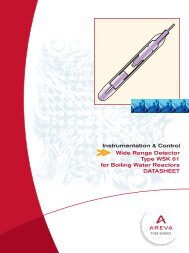Areva EPR
Areva EPR
Areva EPR
Create successful ePaper yourself
Turn your PDF publications into a flip-book with our unique Google optimized e-Paper software.
INTRODUCTION<br />
In a nuclear power plant, the reactor is the part of the facility in which the heat,<br />
necessary to produce steam, is generated by fission of atom nuclei.<br />
The produced steam drives a turbine generator, which generates electricity.<br />
The nuclear steam supply system is therefore the counterpart of coal, gas or oil-fired<br />
boilers of fossil-fuelled plants.<br />
In a Pressurized Water Reactor (PWR)<br />
like the <strong>EPR</strong>, ordinary water is utilized<br />
to remove the heat formed inside<br />
the reactor core by the nuclear fission<br />
phenomenon. This water also slows<br />
down (or moderates) neutrons<br />
(constituents of atom nuclei that are<br />
released in the nuclear fission process).<br />
Slowing down neutrons is necessary<br />
to keep the chain reaction going<br />
(neutrons have to be moderated<br />
to be able to break down<br />
the fissile atom nuclei).<br />
The heat produced inside the reactor<br />
core is transferred to the turbine<br />
through the steam generators.<br />
From the reactor core coolant circuit<br />
(primary circuit) to the steam circuit<br />
used to feed the turbine (secondary<br />
circuit), only heat is transferred and<br />
there is no water exchange.<br />
The primary water is pumped<br />
through the reactor core and the<br />
primary side of the steam generators,<br />
in four parallel closed loops, by electric<br />
motor-powered coolant pumps.<br />
Each loop is equipped with a steam<br />
generator and a coolant pump.<br />
The reactor operating pressure<br />
and temperature are such that the<br />
cooling water does not evaporate<br />
and remains in the liquid state,<br />
which intensifies its cooling efficiency.<br />
A pressurizer controls the pressure;<br />
it is connected to one of the loops.<br />
Pressurizer<br />
Primary<br />
Pump<br />
Steam Generator<br />
Control<br />
Rod Drive<br />
Mechanism<br />
The feedwater entering the secondary<br />
side of the steam generators absorbs<br />
the heat transferred from the primary<br />
side and evaporates to produce<br />
saturated steam. The steam is dried in<br />
the steam generators then routed to the<br />
turbine to drive it. Then, the steam is<br />
condensed and it returns as feedwater<br />
to the steam generators.<br />
The generator, driven by the turbine,<br />
generates electricity.<br />
Transformer<br />
† The following chapters will provide<br />
detailed explanation about the<br />
description and operation of PWR<br />
nuclear power stations based on<br />
the <strong>EPR</strong> reactor.<br />
Reactor<br />
Core<br />
Vessel<br />
Feedwater<br />
Pump<br />
Reheater<br />
Cooling<br />
Water<br />
Generator<br />
Condenser<br />
High Voltage<br />
Electrical Lines<br />
Primary system<br />
Secondary system:<br />
– Steam<br />
– Water<br />
04 I<br />
I 05


